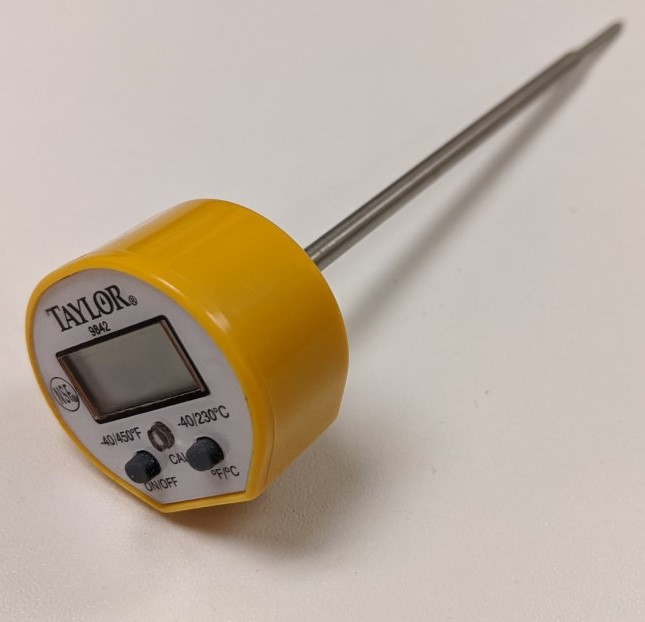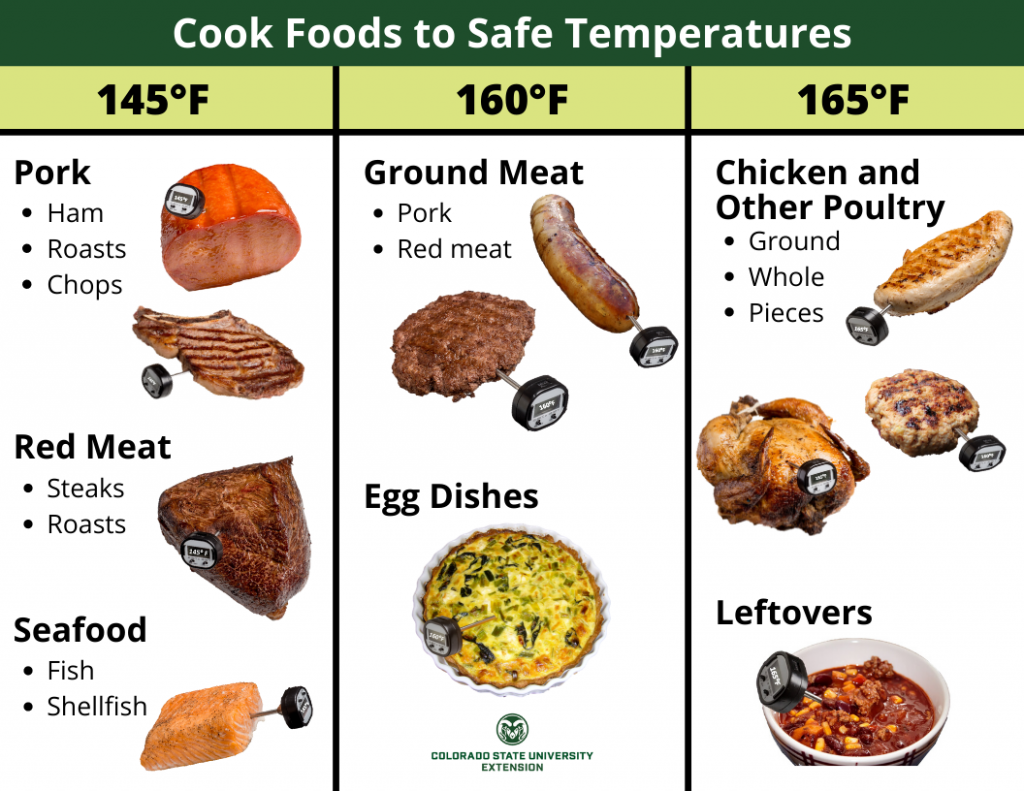Measuring food temperatures is critical to ensure best results with your cooking efforts. Undercooking food poses a safety risk and overcooking food can negatively affect nutrition and taste. Use a food thermometer and follow these temperature guidelines for food safety and quality.

Use a Food Thermometer
Visual signs are not good indicators of ‘doneness’ and can result in undercooked, potentially unsafe food, or dry and overcooked food. Using a food thermometer can assure food reaches the recommended minimum internal temperature. These essential kitchen tools come in several styles and vary in level of technology and price.
- Insert a meat thermometer into the thickest part of the food, away from bone and fat.
- For irregularly-shaped, large cuts (e.g. roasts, whole poultry), check the temperature in several places.
- For thin foods (e.g. burgers, fish), insert the thermometer’s probe sideways (as shown below) to ensure the sensing area reaches the center of the food.

Not sure how to use a thermometer?
- Treat thermometers with care and wash the probe area by hand between uses with hot, soapy water.
- Read manufacturer instructions for proper thermometer use, care, and calibration. If instructions are not available, refer to the USDA’s Kitchen Thermometers fact sheet.


